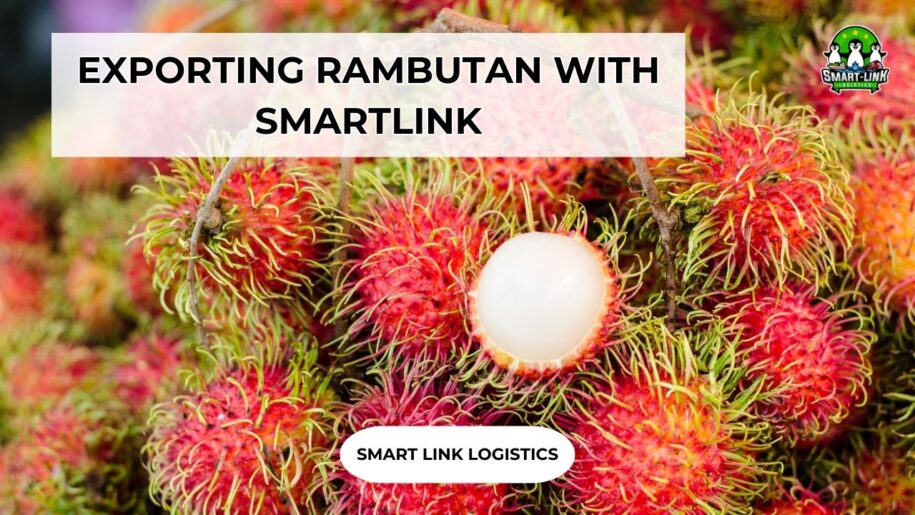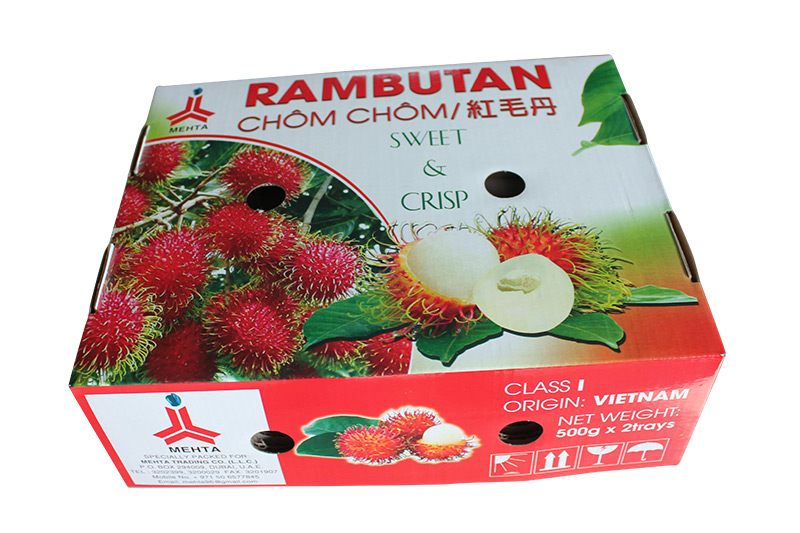
EXPORTING RAMBUTAN WITH SMARTLINK: A COMPLETE GUIDE
Rambutan is among the most popular tropical fruits with significant export potential, particularly to demanding markets such as New Zealand, the United States, and the European Union. However, successfully exporting rambutan requires a deep understanding of quality standards, customs procedures, and appropriate cultivation methods. The following article outlines everything businesses need to know.
1. Vietnam’s Export Potential for Rambutan
Vietnam is known for its abundant supply of high-quality rambutan with a uniquely sweet and refreshing flavor. In recent years, the growing demand for tropical fruits in developed countries has created a promising opportunity for agricultural exporters.
However, alongside these opportunities come numerous technical barriers and strict requirements regarding quality, food safety, and traceability.
2. Quality Standards for Export-Grade Rambutan
To be approved for export, rambutan must meet the following stringent standards:
-
The fruit must be intact, free from bruises, and without any strange odors or tastes.
-
The outer skin must be clean, without signs of damage or disease.
-
The fruit must not be excessively moist (unless stored in cold conditions).
-
It must be free from pests or any traces of pest damage.
-
Clear traceability is required: the growing area, packing facility, and irradiation facility (if applicable) must be registered and certified by the Plant Protection Department.
Meeting these standards not only helps the product pass quarantine inspections but also strengthens the long-term credibility of the exporting business.
3. Detailed Export Procedure for Rambutan
3.1 Legal Policy
Rambutan is not on the list of prohibited or restricted export items and does not require a special export license. Therefore, its export process is similar to that of other fresh fruits.
3.2 HS Code and Export Tax
-
HS Code: 08109030
-
Export Tax: 0%
-
Value Added Tax (VAT): 0%
These preferential rates help businesses reduce export costs significantly.

3.3 Export Customs Documentation
Businesses must prepare a complete customs dossier, including:
-
Commercial contract
-
Commercial invoice
-
Bill of lading
-
Packing list
-
Phytosanitary certificate issued by the Plant Protection Department
-
Other documents as required by current regulations (if applicable)
3.4 Phytosanitary Registration
1–2 days before the shipment departure, exporters must submit a phytosanitary registration to the competent authority. The application includes:
-
Official registration form (according to the prescribed template)
-
Commercial contract, invoice, bill of lading, and packing list
-
Registration codes for growing area, packing facility, and irradiation facility (if applicable)
4. Solutions for Producing Export-Quality Rambutan
To export rambutan effectively, both farmers and businesses must modernize and standardize their farming practices:
Step 1: Prioritize Biological Pesticides
Use biologically sourced and traceable pesticides to reduce harmful chemical residues. Apply in the correct order: chemical pesticides first (if needed), followed by biological agents.
Step 2: Avoid Prohibited Substances
Strictly avoid herbicides and any substances banned in the target export market.
Step 3: Maintain Detailed Farming Logs
Every stage of production should be documented thoroughly to support traceability and compliance.
Step 4: Monitor the Entire Production Process
The growing and harvesting phases must be closely monitored. Samples must be tested for pesticide residue before export.
5. Conclusion: Rambutan Export – Opportunity and Responsibility
The international market for tropical fruits, including rambutan, presents exciting opportunities for Vietnamese farmers and exporters. However, to fully leverage this potential, stakeholders must proactively improve their production, packaging, and quality control processes.
Strict compliance with customs procedures and international standards is the key to helping Vietnamese rambutan reach new markets and establish a strong global presence.
If you’re looking for the best import-export solutions, feel free to contact us for detailed consultation. If you need legal support or assistance with customs procedures in import-export activities, please contact Smart Link Logistics for fast and efficient consultation. With over 14 years of experience in the transportation field, we are proud to accompany you throughout your journey.
Hotline: + 84 902 964 982 to know more about our services

If you require assistance with international import and export of goods, please contact our team at Smartlink Logistics. We are available to provide you with professional guidance on our services and the necessary customs procedures.
SMART LINK: BEST SERVICE BEST YOU


































